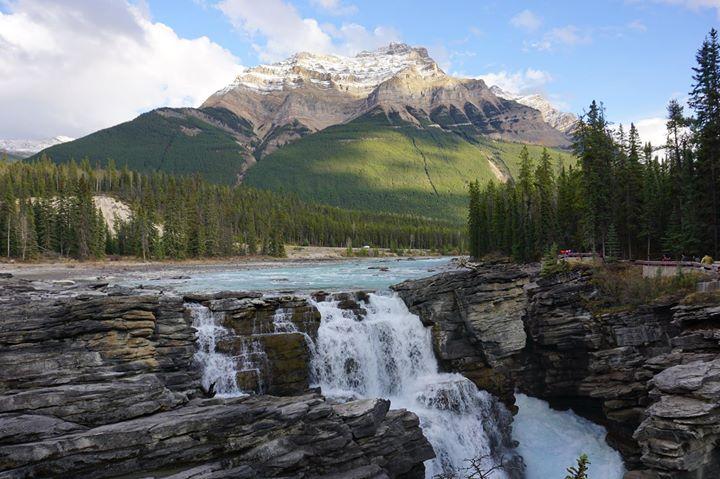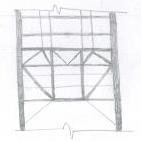-
Posts
1470 -
Joined
-
Last visited
-
Days Won
444
Reputation Activity
-
 UmarMakhzumi got a reaction from Shahzad Khan in Plate Analysis Results and Design Forces in Computer Program
UmarMakhzumi got a reaction from Shahzad Khan in Plate Analysis Results and Design Forces in Computer Program
Hello Everyone,
Recently I have been busy with some checking work related to Shell structures in SAP2000 and Staad Pro. For plate analysis, I came across a good reference document. It is written for Staad but is very good for understanding of the plate forces and results as the plate force convention is almost same in all softwares (Designed for unit width, forces based on local coordinate system, and moment are in the direction of local axis). I can't remember where did I get this document as it was a direct download while exploring google.
It is attached.
Thank you.
Plate Analysis Results and Design Forces in Computer Program.pdf
-
 UmarMakhzumi got a reaction from Mazhar Amin in Dynamic Analysis
UmarMakhzumi got a reaction from Mazhar Amin in Dynamic Analysis
I have attached tutorials that will show you how to setup ETABS model for dynamic analysis. Go through all tutorials. There are lucid and self explanatory.
OneDrive-2014-03-09.zip
-
 UmarMakhzumi reacted to Simple Structures in Cold formed Purlin design
UmarMakhzumi reacted to Simple Structures in Cold formed Purlin design
Most cold rolled purlin suppliers provide a design guide - one is attached.
The purlins can be 'Z' or 'C' section, or hot rolled Angle section. They are always on a slope, hence the two-way bending etc.
Purlins need to be designed for both "wind" uplift, and downward gravity loads.... and the case of net uplift!
Make sure put in structs at mid span or sometime at 1/3 span, to increase load capacity etc. Also diagonal "anti-sag-rods" must be placed at bottom, and some at mid roof height to stop the Z-sections leaning down the slope.
See attachment:
steadmans_purlinsdesignguide.pdf
-
 UmarMakhzumi reacted to EngrUzair in Steel sections & roofing sheets availability in Pakistan
UmarMakhzumi reacted to EngrUzair in Steel sections & roofing sheets availability in Pakistan
AA. Link of a catalogue, providing information about cross-sectional details & weights of different types of steel shapes available in Pakistan, is given below. It also contains list, thicknesses and weights of plain and corrugated steel sheets. Moreover, information about steel door chowkhats is also given therein. Shared for the benefit of all those interested.
Regards.
Link:-
https://www.mwpbnp.com/downloads/Catalogue-mwpbnp.com.pdf
-
 UmarMakhzumi reacted to Simple Structures in Design Snow Load
UmarMakhzumi reacted to Simple Structures in Design Snow Load
With snow loading design, always consider the "Drifting Snow" loading cases also - this often causes building failure.
-
 UmarMakhzumi reacted to Simple Structures in Post Welded Base Resting on Levelling Nuts
UmarMakhzumi reacted to Simple Structures in Post Welded Base Resting on Levelling Nuts
1. Has overheating during welding (fabrication) bent the plate, before it arrived on site. Maybe the base plates was a little "thin" ?..or the weld too big...possibly the baseplate was bent at the outset?
2. Looking at the "close spacing of the HD bolts", tells me the designer is trying to get a "pin" base and forgetting that the bolts need to be spaced out.... this shows lack of HD bolt design experience to me?
3. The bolts are usually put in a "tube" for bit of bolt flexibility, with such close spacing of bolts (sleeve) would mean the concrete pull out cone would have low value? ... the designer does not realise sometimes higher temporary erection wind moments are generated and can be the critical base design case.
4. The plate is welded to column all around...then the bending under the spirit level means that one needs to look elsewhere for the plate bending phenomena?
Normal Practice:
a. Make the baseplate thicker than column flange at least - then increase thickness if needed for temporary erection wind load?
b. The concrete is never at same level, so "shims" are placed on each column location by surveyor.
c. Tight bolts and shims should be fine - if baseplate thickness and bolt design and spacing are correct.
d. Complete WHOLE frame erection. Surveyor then checks "plumb (verticality) and align. If necessary adjust baseplate with steel wedges to get them plumbed and aligned.
e. Once everything is in correct place, grout under the baseplate with "non-shrink high strength grout".
Hope this helps.
-
 UmarMakhzumi got a reaction from Simple Structures in Beam-Girder Connection
UmarMakhzumi got a reaction from Simple Structures in Beam-Girder Connection
This kind of connection is very common. What is the weight of the hoist/ trolley that would be running on the lower beam. The following things should be considered.
1) Include impact forces (vertical, longitudinal, and lateral) for design of beam as well as connection.
2) I suggest adding stiffener between the two bolts on each side of girder.
3) Deflection of bottom beam should be limited to L/600 or vendor criteria whichever is more stringent.
4) 12 mm bolts are very small. Generally we don't use less than 19mm (3/4" bolts). Bolts should be ASTM A325 or A490.
5) For hoists, bolts should be pretensioned. This is important.
Now, for designing such connection, you need to resolve the force at beam end for different position of hoists, the use the maximum value. You have 4 bolts, so calculate shear and tension for each bolt. Consider prying in your calculation. How to do the calculation is very simple. I don't have an example but you can get it from any text book on connection design.
Thanks.
-
 UmarMakhzumi reacted to EngrUzair in Design Snow Load
UmarMakhzumi reacted to EngrUzair in Design Snow Load
AA. Snowfall data of Murree, for the period from Jan 2017 to Mar 2020 has received. It is attached below for the information of all those interested. Data for the earlier period has already been uploaded in a previous post.
Regards.
-
 UmarMakhzumi got a reaction from Badar (BAZ) in Beam-Girder Connection
UmarMakhzumi got a reaction from Badar (BAZ) in Beam-Girder Connection
This kind of connection is very common. What is the weight of the hoist/ trolley that would be running on the lower beam. The following things should be considered.
1) Include impact forces (vertical, longitudinal, and lateral) for design of beam as well as connection.
2) I suggest adding stiffener between the two bolts on each side of girder.
3) Deflection of bottom beam should be limited to L/600 or vendor criteria whichever is more stringent.
4) 12 mm bolts are very small. Generally we don't use less than 19mm (3/4" bolts). Bolts should be ASTM A325 or A490.
5) For hoists, bolts should be pretensioned. This is important.
Now, for designing such connection, you need to resolve the force at beam end for different position of hoists, the use the maximum value. You have 4 bolts, so calculate shear and tension for each bolt. Consider prying in your calculation. How to do the calculation is very simple. I don't have an example but you can get it from any text book on connection design.
Thanks.
-
 UmarMakhzumi got a reaction from Ayesha in Confined Masonry Guidelines Pakistan
UmarMakhzumi got a reaction from Ayesha in Confined Masonry Guidelines Pakistan
Dear All,
While browsing the internet, I came across the following confined masonry guidelines available free to public. They are very informative and would add value to you design practise.
Source: http://www.confinedmasonry.org
Enjoy.
Confined Masonry Earthquake Resistant Guideline .pdf
Construction-Guide-for-Low-Rise-Confined-Masonry-Buildings.pdf
Pakistan_CM-manualv3.0.3TomSchacher.pdf
Pakistan_confined-masonry-english.pdf
Pakistan_ERRA_Guideline_CM.pdf
-
 UmarMakhzumi reacted to Simple Structures in Design code in Pakistan
UmarMakhzumi reacted to Simple Structures in Design code in Pakistan
After 30 years of designing buildings of many shapes and sizes, I still find interpretation of codes for specific detailed design issues require lot of engineering judgement and experience – and even from time to time clarification from those who have sat on committee that written codes on a regular basis! These findings are updated on subsequent revision of the code.
Many 3-D software programmes have made performing structural analysis easier - provided you fully understand the fundamentals of structural engineering, member stiffness, joint releases, torsional restraints, buckling, shear interfaces etc.
Believe you me they are both equally as important; you cannot design with one alone, without having a good knowledge of the other.
-
 UmarMakhzumi got a reaction from Badar (BAZ) in Seismic Frame Check
UmarMakhzumi got a reaction from Badar (BAZ) in Seismic Frame Check
W.Salaam,
For Dual Systems, frames of dual system are required to resist at-least 25% of the total base shear. This ensures that system has sufficient redundancy to justify the higher R value associated/ used with Dual Systems.
There are different way to do it. You can make a copy of your model (or do save as; whichever is more convenient). Assign stiffness modifiers to walls so that they would be taking gravity load only and analyse your model for 25% of total base shear. They other way would be to remove wall panels and just leave the boundary elements and analyse your model.
Thanks.
-
 UmarMakhzumi reacted to Waqar Saleem in Job Oppurtunity
UmarMakhzumi reacted to Waqar Saleem in Job Oppurtunity
Salam,
2 fresh civil engineering graduates and 2 civil engineers with 3 to 5 years of structural design experience are required for a design office in Rawalpindi. Please share CV cewaqar@gmail.com
Regards
-
 UmarMakhzumi reacted to HAMMAD BASHIR in Hinge Definition
UmarMakhzumi reacted to HAMMAD BASHIR in Hinge Definition
Read FEMA 256 for hinges definition. then understanding about moment curvature curve will easy for you.
-
 UmarMakhzumi got a reaction from Huynh Keshley in Seismic Frame Check
UmarMakhzumi got a reaction from Huynh Keshley in Seismic Frame Check
W.Salaam,
For Dual Systems, frames of dual system are required to resist at-least 25% of the total base shear. This ensures that system has sufficient redundancy to justify the higher R value associated/ used with Dual Systems.
There are different way to do it. You can make a copy of your model (or do save as; whichever is more convenient). Assign stiffness modifiers to walls so that they would be taking gravity load only and analyse your model for 25% of total base shear. They other way would be to remove wall panels and just leave the boundary elements and analyse your model.
Thanks.
-
 UmarMakhzumi reacted to Badar (BAZ) in Stiffness Modifiers
UmarMakhzumi reacted to Badar (BAZ) in Stiffness Modifiers
Both practices, with and without stiffness modifiers, are followed to decide about the reinforcement requirement against the design forces. Both approaches will lead to a stable structure as long as mechanics holds.
Having said that, the stiffness-modifier approach is more conservative, and is better representation of the actual conditions in most cases; one would expect columns to be less cracked than beams, and consequently will attract larger share of unbalanced moments at beam-column joint as compared to un-cracked scenario.
-
 UmarMakhzumi got a reaction from SMAQ in Seismic Design Notes
UmarMakhzumi got a reaction from SMAQ in Seismic Design Notes
Hi Shamas,
Please check this out:
https://ocw.mit.edu/courses/civil-and-environmental-engineering/1-561-motion-based-design-fall-2003/
Thanks.
-
 UmarMakhzumi reacted to Badar (BAZ) in RC gantry beam design
UmarMakhzumi reacted to Badar (BAZ) in RC gantry beam design
You need to use ACI 318's equation that relate service-level moment, or the moment against which you need to compute your deflection, to effective moment of inertia. The equation is 9-8 in versions before 318-14, and it is given in table 24.2.3.5 in the 2019 version of ACI . You shouldn't arbitrarily choose the factor.
-
 UmarMakhzumi got a reaction from abbaskhan2294 in Design of shear walls for Moment Envelop?
UmarMakhzumi got a reaction from abbaskhan2294 in Design of shear walls for Moment Envelop?
Like Baz said, envelopes would summarize the max, but they may lead to very conservative design. CSI itself suggests not using envelopes.
Ref: https://wiki.csiamerica.com/display/etabs/Envelope+combination+not+for+design
-
 UmarMakhzumi reacted to Simple Structures in Steel Material testing number
UmarMakhzumi reacted to Simple Structures in Steel Material testing number
1. Material properties from Manufacturer/Supplier of steelwork section, i.e Steel Mill. This information is trusted in the West (however, in South Asia, just double check that the certificate is genuine)
2. Welding and connections verification /certification by Fabricator or the testing Company he has used, if independent checks are done.
-
 UmarMakhzumi reacted to Badar (BAZ) in ETABS: Thin Shell Vs Membrane
UmarMakhzumi reacted to Badar (BAZ) in ETABS: Thin Shell Vs Membrane
If the shell element has been designated as being membrane (in-plane behavior) , ETABS will not transfer out-of-plane loads.
-
 UmarMakhzumi reacted to Badar (BAZ) in Design of shear walls for Moment Envelop?
UmarMakhzumi reacted to Badar (BAZ) in Design of shear walls for Moment Envelop?
Concept of envelope is to find maximum value of design force (shear, moment, torsion) or displacement for a bunch of loading scenarios at various locations along the member.
Influence line is different. It gives you the value of force/displacement for a single point on a member for various positions of same loading type. Of course you can create envelope in this case as well.
-
 UmarMakhzumi reacted to Simple Structures in Max Percentage of steel in Columns
UmarMakhzumi reacted to Simple Structures in Max Percentage of steel in Columns
@kHURRAM ALImakes a good point about staggered laps. Staggered laps are a good practice on columns, beams, walls and slab.
1. The reinforcement arrangement should be always be staggered to avoid, or reduce likelihood of large cracks or spalling.
2. The staggered laps should not be located in areas of high moment.
This is what Eurocode EC2 guidance is for column - 4% max generally, to 8% max at laps (although this is always less in reality by staggered laps) . Columns have to be designed to be ductile and hence limits apply. The concrete takes compression load, whilst reinforcement takes tensile loads. In slender columns the failure is most case is due to bending.
Therefore best to stagger laps for better performance. There is a technical reason behind these max limits so best to work within them, otherwise also difficult to prove otherwise to checking engineers and authorities.
-
 UmarMakhzumi reacted to kHURRAM ALI in Max Percentage of steel in Columns
UmarMakhzumi reacted to kHURRAM ALI in Max Percentage of steel in Columns
use staggered bar detailing at lap joint , by doing this , you can provide 5.25% steel in column instead of 4%, at lap joint column steel from above story will be half , so total steel at lap will be 5.25+5.25/2= 7.875% , which is less than 8% for IMRF . This detailed not applied to SMRF , as code restricted max column steel < 6%
-
 UmarMakhzumi reacted to Nustian371 in CSiBridge Multi Step Bridge Live Load Pattern Generation
UmarMakhzumi reacted to Nustian371 in CSiBridge Multi Step Bridge Live Load Pattern Generation
It will be helpful for you to see the example in the CSI help for the application of influence lines and traffic loading as it is a bit difficult to explain the procedure of loading pattern. Normally you have the UDL load for the bridge lane then your point axle loads followed by UDL at the end again. In most cases the speed limit is 10KM to 15kM just to see the maximum BMD and SFD.
For the number of vehicle crossing the bridge, you normally design for one vehicle with maximum load case going across the bridge. if you add more vehicles you worst case still will be with the first load case single vehicle.
See AASHTO or any other design code you are using you will see the application of maximum load case for single span. Just apply these loads no need to add so many vehicles on the bridge.




